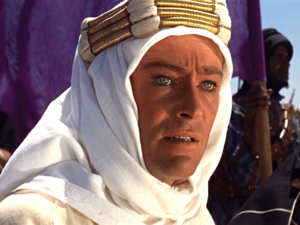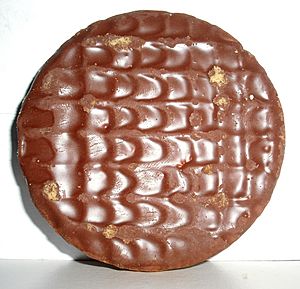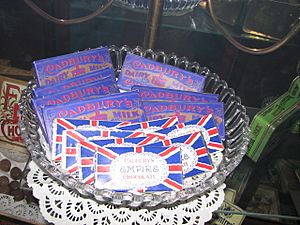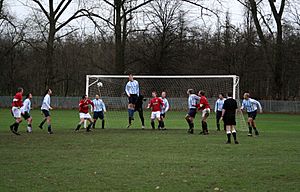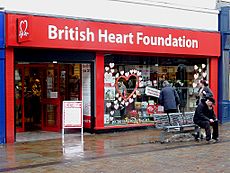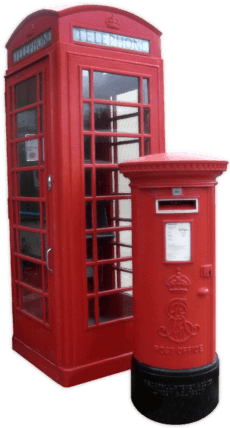Culture of the United Kingdom facts for kids
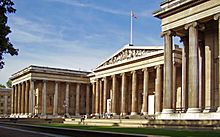
Culture is the set of behaviours, beliefs, customs, and values shared by the population of a sovereign nation. The culture of the United Kingdom is influenced by its combined nations' history; its historically Christian religious life, its interaction with the cultures of Europe, the individual cultures of England, Wales and Scotland and the impact of the British Empire. However, what is key, is that regardless of where you come from, your race or religion is that the British people are unified by the British values - they each embody the principles of being a good person and having honour. The culture of the United Kingdom may also colloquially be referred to as British culture; Northern Ireland, though not geographically part of Great Britain, may still be considered as having a place within British culture. Although British culture is a distinct entity, from the Royal family to writers such as William Shakespeare or Charles Dickens, the individual cultures of England, Scotland, Wales and Northern Ireland are diverse. There have been varying degrees of overlap and distinctiveness between these four cultures.
British literature is particularly esteemed. The modern novel was developed in Britain, and playwrights, poets, and authors are among its most prominent cultural figures. Britain has also made notable contributions to music, cinema, art, architecture and television. The UK is also the home of the Church of England, the state church and mother church of the Anglican Communion, the third-largest Christian denomination. Britain contains some of the world's oldest universities, has made many contributions to philosophy, science, technology and medicine, and is the birthplace of many prominent scientists and inventions. The Industrial Revolution began in the UK and had a profound effect on socio-economic and cultural conditions around the world.
British culture has been influenced by historical and modern migration, the historical invasions of Great Britain, and the British Empire. As a result of the British Empire, significant British influence can be observed in the language, law, culture and institutions of its former colonies, most of which are members of the Commonwealth of Nations. A subset of these states form the Anglosphere, and are among Britain's closest allies. British colonies and dominions influenced British culture in turn, particularly British cuisine.
Sport is an important part of British culture, and numerous sports originated in the country including cricket, football, tennis and rugby,which many counties have now adopted. The UK has been described as a "cultural superpower", and London has been described as a world cultural capital. A global opinion poll for the BBC saw the UK ranked the third most positively viewed nation in the world (behind Germany and Canada) in 2013 and 2014.
Contents
History
Throughout its history, the culture of Great Britain has primarily consisted of the separate native traditions of England, Scotland and Wales. With regard to cultural influences, prior to the expansion of the British Empire, the island had been most notably influenced by French culture (via the Normans), Scandinavian culture (via the Vikings) and Italian culture (via the Romans).
The arrival of Celtic and Germanic tribes influenced Britain's early development. The Celtic peoples introduced unique languages, traditions, and social structures. Subsequently, the migrations of Germanic tribes, such as the Anglo-Saxons, further influenced Britain’s cultural landscape. The ancient Roman occupation of Britain, lasting almost 400 years, also impacted the linguistic and cultural identity of Great Britain.
Following the expansion of the British Empire, England, Scotland and Wales absorbed different peoples from around the world, and, post-World War II, Britain developed a more diverse cultural landscape through higher levels of immigration. Today, it has a sizable immigrant population, and encompasses the cultures of British people from various backgrounds, with South Asian, Continental European, African and Caribbean descent being most prevalent.
Arts
Literature
The United Kingdom inherited the literary traditions of England, Scotland and Wales. These include Arthurian literature and its Welsh origins, Norse-influenced Old English literature, the works of English authors Geoffrey Chaucer and William Shakespeare, and Scots works such as John Barbour's The Brus.
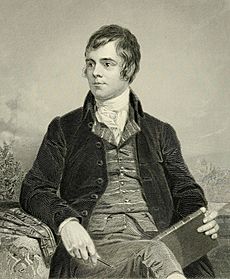
The early 18th century period of British literature is known as the Augustan Age and included the development of the novel. Daniel Defoe's Robinson Crusoe (1719) and Moll Flanders (1722) are often seen as the first English novels, however the development of the novel took place in a wider literary context that included the rise of prose satires – which reached a high point with Gulliver's Travels – and earlier foreign works like the Spanish Don Quixote. Also linked to the Augustan period is Samuel Johnson's A Dictionary of the English Language. Published in 1755, it was viewed as the pre-eminent British dictionary until the completion of the Oxford English Dictionary 150 years later.
The subsequent Romantic period showed a flowering of poetry comparable with the Renaissance 200 years earlier, and a revival of interest in vernacular literature. In Scotland the poetry of Robert Burns revived interest in Scots literature, and the Weaver Poets of Ulster were influenced by literature from Scotland. In Wales the late 18th century saw the revival of the eisteddfod tradition, inspired by Iolo Morganwg. The period also saw the publication of A Vindication of the Rights of Woman (1792), by Mary Wollstonecraft, is one of the earliest works of feminist philosophy.
The late Georgian and Victorian era saw a renewed focus on the novel. A key theme of these novels was social commentary. Early in the period Jane Austen satirised the lifestyle of the gentry and nobility, while the later novels of Charles Dickens often used humour and keen observations to criticise poverty and social stratification. The three Brontë sisters and George Eliot commented on Northern England and the Midlands respectively, though all four women wrote under male pen names during their lifetimes, partly to deflect anti-feminist criticism. Nevertheless, openly female authors achieved considerable success in the period, such as the predominantly religious poems of Elizabeth Barrett Browning and Christina Rossetti.
Rudyard Kipling exemplifies the British Empire's influence on British literature. His novels The Jungle Book and The Man Who Would Be King are both set in British India, the poem If— evokes the concept of the "stiff upper lip", while The White Man's Burden demonstrates a white supremacist Imperialist outlook.

World War I gave rise to British war poets and writers such as Wilfred Owen, Siegfried Sassoon, and Rupert Brooke, who wrote (often paradoxically) of their expectations of war, and their experiences in the trenches. Initially idealistic and patriotic in tone, as the war progressed the tone of the movement became increasingly sombre and pacifistic. The beginning of the twentieth century also saw the Celtic Revival stimulate a new appreciation of traditional Irish literature, while the Scottish Renaissance brought modernism to Scottish literature as well as an interest in new forms in the literatures of Scottish Gaelic and Scots. The English novel developed in the 20th century into much greater variety and it remains today the dominant English literary form.
The contemporary British literary scene is marked by awards such as the Booker Prize, created in 1969, and festivals including the Welsh Hay Festival, held since 1988. The prominent status of children's literature in the UK was demonstrated in the opening ceremony of the London 2012 Olympic Games, which contained sequence dedicated to prominent children's literary characters. In 2003 the BBC carried out a British survey entitled The Big Read in order to find the "nation's best-loved novel", with works by English novelists J. R. R. Tolkien, Jane Austen, Philip Pullman, Douglas Adams and J. K. Rowling making up the top five on the list. More than 75% of the British public read at least one book annually. The UK is also among the largest publishers of books. As of 2017[update], six firms in the United Kingdom rank among the world's biggest publishers of books in terms of revenue: Bloomsbury, Cambridge University Press, Informa, Oxford University Press, Pearson, and RELX Group.
Theatre

From its formation in 1707 the United Kingdom has had a vibrant tradition of theatre, much of it inherited from England, Scotland and Wales. The Union of the Crowns coincided with the decline of Restoration comedy in favour of sentimental comedy, domestic tragedy such as George Lillo's The London Merchant (1731), and by an overwhelming interest in Italian opera. Popular entertainment became more important in this period than ever before, with fair-booth burlesque and mixed forms that are the ancestors of the English music hall. These forms flourished at the expense of other forms of English drama, which went into a long period of decline. In Scotland the opposite occurred, with the emergence of specifically Scottish plays including John Home's Douglas and the works of Walter Scott, which included original plays as well as adaptations of his Waverley novels. The late 19th century saw revival of English theatre with arrival of Irishmen George Bernard Shaw and Oscar Wilde, who influenced domestic English drama and revitalised it. Their contemporaries Gilbert and Sullivan had a similar impact on musical theatre with their comic operas. The Shakespeare Memorial Theatre was opened in Shakespeare's birthplace Stratford upon Avon in 1879 and Herbert Beerbohm Tree founded an Academy of Dramatic Art at Her Majesty's Theatre in 1904.
The early twentieth century was dominated by drawing-room plays produced by the likes of Noël Coward, which were then challenged by the kitchen sink realism and absurdist drama influenced by Irishman Samuel Beckett in the 1950s and 60s. Conversely 1952 saw the first performance of Agatha Christie's The Mousetrap, a drawing-room murder mystery that has seen over 25,000 performances and is the longest-running West End show. At the same time the performing arts theatre Sadler's Wells, under Lilian Baylis, nurtured talent that led to the development of an opera company, which became the English National Opera (ENO); a theatre company, which evolved into the National Theatre; and a ballet company, which eventually became the English Royal Ballet. Elsewhere the Royal Shakespeare Company was founded in 1959 at Stratford-upon-Avon, and continues to mainly stage Shakespeare's plays.
Contemporary British theatre is focused on the West End, London's major theatre district. The Theatre Royal, Drury Lane in the City of Westminster dates back to 1663, making it the oldest London theatre, however the Theatre Royal at the Bristol Old Vic is the oldest continually-operating theatre in the English speaking world, opening in 1768. The musicals of Andrew Lloyd Webber have dominated the West End since the late 20th century, leading him to be dubbed "the most commercially successful composer in history". A National Theatre of Scotland was set up in 2006.
Music
Classical music
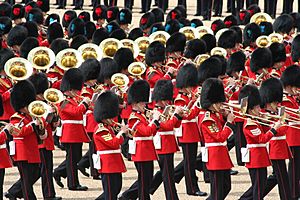
British Baroque music was heavily influenced by continental fashions. This is exemplified by George Frideric Handel, a German-born naturalised British citizen whose choral music set British taste for the next two centuries. His operas also helped Britain challenge Italy as a centre of operatic production. Classical music attracted much attention from 1784 with the formation of the Birmingham Triennial Music Festival, which was the longest running classical music festival of its kind until the final concerts in 1912. Beyond this, the establishment of the London Philharmonic Society in 1813, Royal Academy of Music in 1822, and Irish Academy of Music in 1848 aided the professionalisation of British classical music and patronage of composers.
The Philharmonic Society was a strong supporter of the German Felix Mendelssohn, an early Romantic composer who also strongly influenced British music. In Ireland, John Field invented the nocturne and may have been an influence on Chopin and Liszt. A notable development of the mid- to late-nineteenth century was the resurgence of English-language opera and the establishment of several prominent orchestras, including the Royal Liverpool Philharmonic in 1840, Manchester-based Hallé in 1858, the Scottish Orchestra in 1891 and the City of Birmingham Symphony Orchestra in 1920. The most notable trend in classical music at the turn of the century was the nationalistic trend that developed. This was initially seen in works like The Masque at Kenilworth, which reconstructed an Elizabethan masque, but later took a pastoral turn under the influence of the British folk revival. Examplars of this period are Ralph Vaughan Williams' English Folk Song Suite, and Sir Alexander Mackenzie's Scottish Rhapsodies.
Modern and contemporary classical music takes a variety of forms. Composers such as Benjamin Britten developed idiosyncratic and avant-garde styles, while the likes of William Walton produced more conventional ceremonial and patriotic music. The UK now has several major orchestras, including the BBC Symphony Orchestra, and the Philharmonia, while the establishment of the Opera North in 1977 sought to redress the balance of operatic institutions away from London. There are several classical festivals, such as Aldeburgh and Glydebourne, while the BBC Proms are an important annual fixture in the classical calendar.
Popular music
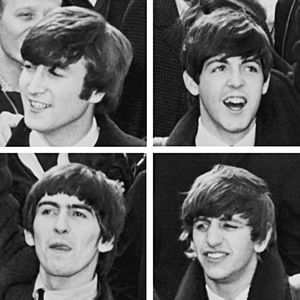
Popular commercial music in Britain can be traced back at least as far as the seventeenth-century broadside ballad, and also encompasses brass band music and music hall. Popular music in the modern sense began to emerge in the 1950s, as the American styles of jazz and rock and roll became popular. The skiffle revival was an early attempt to create a British form of American music, but it was the emergence of British rock and roll by the early 1960s that established a viable British popular music industry. Genres such as beat and British blues were re-exported to America by bands such as the Beatles and Rolling Stones, in a move that came to be called the British Invasion. The 1960s saw the development of heavy metal out of Birmingham and the wider area. The development of blues rock helped differentiate rock and pop music, leading to the emergence of several sub-genres of rock in the 1970s. Glam rock was a particularly British genre that emphasised outrageous costumes, while the end of the decade saw the rise of punk, new wave, and post-punk bands. The influence of immigration could also be seen in the increased prominence of World music, particularly Jamaican music.
The 1980s were a successful decade in British pop, as a second British Invasion was witnessed and new technology enabled genres such as synthpop to form. Jazz saw a resurgence as black British musicians created new fusions such as Acid Jazz. Indie rock was a reaction to the perceived saturation of the music industry by pop, exemplified by Stock Aitken Waterman's domination of the charts. This continued in the 1990s, as boy bands, all-female and mixed groups dominated the singles chart, while the Madchester scene helped drive alternative rock and Britpop to the mainstream. British soul saw a rise that continued into the 2000s, including the global success of Adele. Dance music also saw innovation, with genres such as dubstep and new rave emerging.
Folk and sub-national music
In contrast to the comparatively homogeneous classical and pop genres, each nation of the UK has retained a distinct tradition of folk music. The traditional folk music of England has contributed to several genres, such as sea shanties, jigs, hornpipes and dance music. It has its own distinct variations and regional peculiarities, while musical Morris dancing is an English folk dance known to have existed at least as early as the mid-15th century.
The bagpipes have long been a national symbol of Scotland, and the Great Highland Bagpipe is widely recognised. The English and Scottish Popular Ballads, are ballads of the British Isles from the later medieval period until the 19th century, demonstrating great regional variety, particularly local traditions such as the Border ballads, which include the particularly influential Ballad of Chevy Chase.British folk groups, such as Fairport Convention, have drawn heavily from these ballads.
Similarly, while the national anthem "God Save the King" and other patriotic songs such as "Rule, Britannia!" represent the United Kingdom, each of the four individual countries of the UK has its own patriotic hymns. For example, Jerusalem, Flower of Scotland, Land of My Fathers, and Danny Boy pertain exclusively to England, Scotland, Wales, and Northern Ireland respectively. These songs are often used at sporting events where each nation competes individually.
Cinema
Britain has had a significant film industry for over a century. While many films focus on British culture, British cinema is also marked by its interaction and competition with American and continental European cinema.
The UK was the location of the oldest surviving moving picture, Roundhay Garden Scene (1888), which was shot in Roundhay, Leeds by French inventor Louis Le Prince, while the first British film, Incident at Clovelly Cottage was shot in 1895. The world's first colour motion picture was shot by Edward Raymond Turner in 1902. British film production suffered in the 1920s in face of competition from American imports and a legal requirement for cinemas to show a set quota of British films, which encouraged poor-quality, low-cost productions to meet this demand. This had changed by the 1940s, when the government encouraged fewer, higher-quality films to be made. This era also saw the rise of Alfred Hitchcock, who soon moved to the US and become one of the twentieth century's most influential directors. During World War II the Crown Film Unit established a reputation for documentaries, while Powell and Pressburger began their influential and innovative collaboration.
The post-war period was a particular high point for British filmmaking, producing The Third Man and Brief Encounter, which the British Film Institute consider the best and second-best British films respectively. Laurence Olivier's 1948 Hamlet was the first British film to win the Academy Award for Best Picture. The 1950s saw a focus on popular domestic topics such as comedies, including the enduring Carry On series, and World War II epics such as The Dam Busters. At the end of the decade Hammer Films took advantage of relaxed censorship laws to begin their series of successful horror films. The beginning of the 1960s saw the British New Wave style develop, influenced by its French counterpart, that sought to depict a wider strata of society in a realistic manner. The 1960s also saw renewed American financial interest in British film, which particularly manifested itself in the development of historical epics, such as Best Picture winners Lawrence of Arabia and A Man for All Seasons; spy thrillers, including the first films in the James Bond franchise; and films based on 'swinging London' scene.
The 1970s saw a withdrawal of American support and a retrenchment in British cinema, though the decade did see culturally important productions such as the horror The Wicker Man and Monty Python's comedic films. The decade also saw the Commonwealth influence British film, as Pressure and A Private Enterprise are considered the first Black British and British Asian films respectively. 1981's Chariots of Fire and 1982's Gandhi both won the Best Picture Oscar, the latter winning eight awards, prompting a resurgence in period films. 1982 also saw the creation of Channel 4, which had a remit to promote films for minority audiences. Films with racial and LGBT themes were produced, while Channel 4's involvement saw television stars move into feature films.
American investment again increased in the 1990s, and the success of Four Weddings and a Funeral saw romantic comedies rise in popularity. Merchant Ivory Productions, boosted by the Oscars success of the previous decade's period pieces, continued to produce films in the same vein. American studios also began to base the production of Hollywood films in the UK, encouraged by tax incentives. 1996's Trainspotting led to increased interest in regional, particularly Scottish, cinema. While American-funded films continued their influence in the 2010s, domestic European co-productions also received acclaim. The Queen was British-French production for which Helen Mirren won Best Actress, while the UK Film Council funded The King's Speech, which won Best Picture in 2011. Asian British cinema has risen in prominence since 1999, when East is East was a mainstream success on a low budget.
Broadcasting
The UK has been at the forefront of developments in film, radio and television. Broadcasting in the UK has historically been dominated by the taxpayer-funded but independently run British Broadcasting Corporation (commonly known as the BBC), although other independent radio and television (ITV, Channel 4, Five) and satellite broadcasters (especially BSkyB which has over 10 million subscribers) have become more important in recent years. BBC television, and the other three main television channels are public service broadcasters who, as part of their licence allowing them to operate, broadcast a variety of minority interest programming. The BBC and Channel 4 are state-owned, though they operate independently.
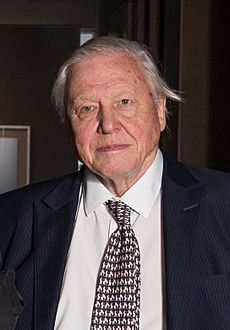
Launched in 1955, ITV is the oldest commercial television network in the UK. Director Ridley Scott's evocative 1973 Hovis bread television commercial captured the public imagination. Filmed on Gold Hill, Shaftesbury in Dorset, Scott's advert was voted the UK's favourite television advertisement of all time in 2006. Other notable British commercials include the 1989 British Airways face advertisement, the 2005 noitulovE advert for Guinness, the 2007 Gorilla advertisement by Cadbury chocolate featuring a gorilla playing drums with Phil Collins' track "In the Air Tonight" playing in the background, and a 2013 advert for Galaxy chocolate bar featuring a computer-generated image of Audrey Hepburn. Christmas commercials are screened from early November in the UK, with campaigns including the John Lewis Christmas advert for the department store chain.
International football tournaments, such as the World Cup, are historically the most viewed sports events among the public, while Match of the Day is the most popular weekly football show. The 1966 FIFA World Cup Final and the Funeral of Princess Diana are the two most watched television events ever in the UK. Satire has been a prominent feature in British comedy for centuries. The British satire boom of the 1960s, which consisted of writers and performers such as Peter Cook, Dudley Moore, Alan Bennett, David Frost and Jonathan Miller, has heavily influenced British television, including the sketch comedy series Monty Python's Flying Circus created in 1969 by Monty Python. Regarded as the leading figure of the satire boom, Peter Cook was ranked number one in the Comedians' Comedian poll. The puppet show Spitting Image was a satire of the royal family, politics, entertainment, sport and British culture of the 1980s up to the mid-1990s.
Have I Got News for You and Mock the Week are the two longest running satirical panel shows. Satire also features heavily in the Grand Theft Auto video game series which has been ranked among Britain's most successful exports. The slapstick and double entendre of Benny Hill also achieved very high ratings on British television, as did the physical humour of Mr. Bean. Popular comedy duos in television include The Two Ronnies and Morecambe and Wise, with both shows featuring memorable sketches. Jeeves and Wooster starred Hugh Laurie as Bertie Wooster, an airy, nonchalant, gormless, idle young gentleman and Stephen Fry as Jeeves, his calm, well-informed, and talented valet. Created by and starring Rik Mayall as Richie and Adrian Edmondson as Eddie, Bottom features two flatmates with no jobs and little money, which is noted for its chaotic, nihilistic humour and violent comedy slapstick. Steve Coogan created the character Alan Partridge, a tactless and inept television presenter who often insults his guests and whose inflated sense of celebrity drives him to shameless self-promotion. Da Ali G Show starred Sacha Baron Cohen as a faux-streetwise poseur Ali G from west London, who would conduct real interviews with unsuspecting people, many of whom are celebrities, during which they are asked absurd and ridiculous questions.
Animator Nick Park created the Wallace and Gromit characters at Aardman Animations studio in Bristol. They feature in A Grand Day Out (1989), The Wrong Trousers (1993) and A Close Shave (1995), which all have 100% positive ratings on the aggregation site Rotten Tomatoes, while A Matter of Loaf and Death was the most watched television programme in the UK in 2008. Aardman also produce the kid's show Shaun the Sheep. One of the most popular children's shows originating in the UK is Thomas & Friends (based on The Railway Series books by Wilbert Awdry), which has become the number one licensed preschool property in the world. Other popular children's shows include Postman Pat, Fireman Sam, Teletubbies, Bob the Builder and Peppa Pig
First airing in 1958, Blue Peter is famous for its arts and crafts "makes". The show has been a staple for generations of British children. Popular live action TV shows include The Borrowers (based on Mary Norton books on little people), The Adventures of Black Beauty, The Famous Five (based on Enid Blyton books), The Lion, the Witch and the Wardrobe (based on the C. S. Lewis novel), and Pride and Prejudice (starring Colin Firth as Mr. Darcy). The actor David Jason has voiced a number of popular characters in children's animation, including The Wind in the Willows (based on the children's book by Kenneth Grahame), Danger Mouse and Count Duckula. Other children's shows include Where's Wally? (a series based on books by author Martin Handford where readers are challenged to find Wally who is hidden in the group), Dennis the Menace and Gnasher, while Thunderbirds and Terrahawks by Gerry and Sylvia Anderson have been praised for creating Supermarionation.
Debuting in 1982, The Snowman (featuring the festive song "Walking in the Air") is annually screened at Christmas. Shown on the BBC, the UK holds two high-profile charity telethon events, Children in Need, held annually in November, and Comic Relief, which alternates with Sports Relief, every March. The 2011 edition of Comic Relief saw the first appearance of James Corden's Carpool Karaoke sketch when he drove around London singing songs with George Michael. British programmes dominate the list of TV's most watched shows in the UK, with the kitchen sink dramas, ITV's Coronation Street and BBC's EastEnders, both often ranking high on the ratings list compiled by BARB. The major soap operas each feature a pub, and these pubs have become household names throughout the UK. The Rovers Return is the pub in Coronation Street, the Queen Vic (short for the Queen Victoria) is the pub in EastEnders, and the Woolpack in ITV's Emmerdale. The pub being a prominent setting in the three major television soap operas reflects the role pubs have as the focal point of the community in many towns and villages across the UK. Espionage and detective shows have long been a staple of British television, such as the 1960s series The Avengers featuring lady spy adventurer and cultural (and feminist) icon Emma Peel.
The United Kingdom has a large number of national and local radio stations which cover a great variety of programming. The most listened to stations are the five main national BBC radio stations. BBC Radio 1, a new music station aimed at the 16–24 age group. BBC Radio 2, a varied popular music and chat station aimed at adults is consistently highest in the ratings. BBC Radio 4, a varied talk station, is noted for its news, current affairs, drama and comedy output as well as The Archers, its long running soap opera, and other unique programmes, including Desert Island Discs (1942–present), an interview programme in which a famous guest (called a "castaway") chooses eight pieces of music, a book and a luxury item that they would take with them to a desert island. Currently presented by Lauren Laverne, it is the longest running music radio programme in British history.
The idea for a Christmas message was conceived by one of the founders of the BBC. Delivered annually by the monarch, it was first broadcast on BBC Radio in 1932. An alternative Christmas message was first broadcast on Channel 4 in 1993. Broadcast from 1951 to 1960, radio comedy The Goon Show, starring Peter Sellers, Spike Milligan and Harry Secombe, mixed ludicrous plots with surreal humour, puns, catchphrases and an array of bizarre sound effects. The show has exerted considerable influence on British comedy and culture. As a film star Sellers in particular became influential to film actors by using different accents and guises and assuming multiple roles in the same film. Comedian Marty Feldman co-created the acclaimed BBC Radio comedy programme Round the Horne in 1965. The long running radio comedy Just a Minute first aired on BBC Radio 4 in 1967. Panellists must talk for sixty seconds on a given subject, "without hesitation, repetition or deviation". Guests over the years have included Stephen Fry, Eddie Izzard and Sue Perkins. First broadcast on BBC Radio 4 in 1978, the science fiction comedy radio series The Hitchhiker's Guide to the Galaxy was innovative in its use of music and sound effects. The BBC, as a public service broadcaster, also runs minority stations such as BBC Asian Network, BBC Radio 1Xtra and BBC Radio 6 Music, and local stations throughout the country. Rock music station Absolute Radio, and sports station Talksport, are among the biggest commercial radio stations in the UK.
- List of radio stations in the United Kingdom
- List of television stations in the United Kingdom
Visual arts
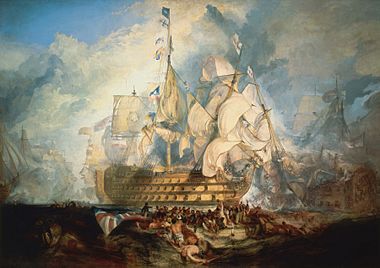
From the creation of the United Kingdom, the English school of painting is mainly notable for portraits and landscapes, and indeed portraits in landscapes. Among the artists of this period are Joshua Reynolds (1723–1792), George Stubbs (1724–1806), and Thomas Gainsborough (1727–1788).
Pictorial satirist William Hogarth pioneered Western sequential art, and political illustrations in this style are often referred to as "Hogarthian". Following the work of Hogarth, political cartoons developed in England in the latter part of the 18th century under the direction of James Gillray. Regarded as being one of the two most influential cartoonists (the other being Hogarth), Gillray has been referred to as the father of the political cartoon, with his satirical work calling the king (George III), prime ministers and generals to account.
The late 18th century and the early 19th century was perhaps the most radical period in British art, producing William Blake (1757–1827), John Constable (1776–1837) and J. M. W. Turner (1775–1851), three of the most influential British artists, each of whom have dedicated spaces allocated for their work at the Tate Britain. Named after Turner, the Turner Prize (created in 1984) is an annual award presented to a British visual artist under the age of 50.
The Pre-Raphaelite Brotherhood (PRB) achieved considerable influence after its foundation in 1848 with paintings that concentrated on religious, literary, and genre subjects executed in a colourful and minutely detailed style. PRB artists included John Everett Millais, Dante Gabriel Rossetti and subsequently Edward Burne-Jones. Also associated with it was the designer William Morris, whose efforts to make beautiful objects affordable (or even free) for everyone led to his wallpaper and tile designs to some extent defining the Victorian aesthetic and instigating the Arts and Crafts movement.
Visual artists from the UK in the 20th century include Lucian Freud, Francis Bacon, David Hockney, Bridget Riley, and the pop artists Richard Hamilton and Peter Blake. Also prominent amongst 20th-century artists was Henry Moore, regarded as the voice of British sculpture, and of British modernism in general. Sir Jacob Epstein was a pioneer of modern sculpture. In 1958 artist Gerald Holtom designed the protest logo for the British Campaign for Nuclear Disarmament (CND), the peace movement in the UK, which became a universal peace symbol. As a reaction to abstract expressionism, pop art emerged in England at the end of the 1950s. The 1990s saw the Young British Artists, Damien Hirst and Tracey Emin.
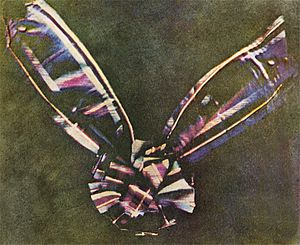
The auction was revived in 17th- and 18th-century England when auctions by candle began to be used for the sale of goods and leaseholds, some of which were recorded in Samuel Pepys's diary in 1660. Headquartered in King Street, London, Christie's, the world's largest auction house, was founded in 1766 by auctioneer James Christie in London. Known for his thickly impasted portrait and figure paintings, Lucian Freud was widely considered the pre-eminent British artist of his time. Freud was depicted in Francis Bacon's 1969 oil painting, Three Studies of Lucian Freud, which was sold for $142.4 million in November 2013, the highest price attained at auction to that point.
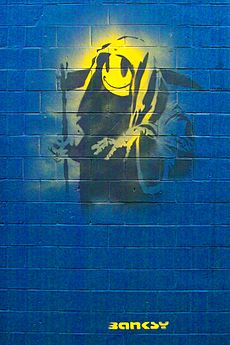
Randolph Caldecott, Walter Crane, Kate Greenaway, John Tenniel, Aubrey Beardsley, Roger Hargreaves, Arthur Rackham, John Leech, George Cruikshank and Beatrix Potter were notable book illustrators. Posters have played a significant role in British culture. Designed by Alfred Leete in 1914 as a recruitment poster for the British Army, "Lord Kitchener Wants You" is the most famous British recruitment poster ever produced and an iconic and enduring image of World War I. Produced by the British government in 1939 for World War II, the Keep Calm and Carry On motivational poster is now seen as "not only as a distillation of a crucial moment in Britishness, but also as an inspiring message from the past to the present in a time of crisis".
In the late 1960s, British graphic designer Storm Thorgerson co-founded the graphic art group Hipgnosis, who have designed many iconic single and album covers for rock bands. His works were notable for their surreal elements, with perhaps the most famous being the cover for Pink Floyd's The Dark Side of the Moon. Designed and photographed by Brian Duffy, the Aladdin Sane album cover features a lightning bolt across his face which is regarded as one of the most iconic images of David Bowie. The subversive political artwork of Banksy (pseudonym of English graffiti artist whose identity is concealed) can be found on streets, walls and buildings in the UK and the rest of the world. Arts institutions include the Royal College of Art, Royal Society of Arts, New English Art Club, Slade School of Art, Royal Academy, and the Tate Gallery (founded as the National Gallery of British Art).
- Design
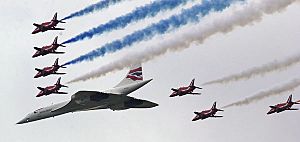
In 2006, 37 years after its first test flight, Concorde was named the winner of the Great British Design Quest organised by the BBC and the Design Museum. A total of 212,000 votes were cast with Concorde beating other British design icons such as the Mini, mini skirt, Jaguar E-Type, Tube map and the Supermarine Spitfire. The Spitfire featured in Christopher Nolan's 2017 action-thriller film Dunkirk.
Sir Morien Morgan led research into supersonic transport in 1948 that culminated in the Concorde passenger aircraft. In November 1956 he became chairman of the newly formed Supersonic Transport Aircraft Committee which funded research into supersonic transport at several British aviation firms though the 1950s. By the late 1950s, the committee had started the process of selecting specific designs for development, and after the forced merger of most aviation firms in 1960, selected the Bristol Type 223, designed by Archibald Russell, as the basis for a transatlantic design.
The Brit Awards statuette for the BPI's annual music awards, which depicts Britannia, the female personification of Britain, is regularly redesigned by some of the best known British designers, stylists and artists, including Dame Vivienne Westwood, Damien Hirst, Tracey Emin, Sir Peter Blake, Zaha Hadid and Sir Anish Kapoor.
Performing arts, carnivals, parades
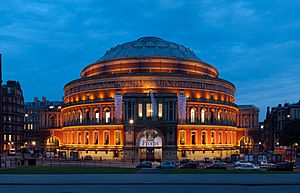
Large outdoor music festivals in the summer and autumn are popular, such as Glastonbury (the largest greenfield festival in the world), V Festival, Reading and Leeds Festivals. The UK was at the forefront of the illegal, free rave movement from the late 1980s, which led to pan-European culture of teknivals mirrored on the British free festival movement and associated travelling lifestyle. The most prominent opera house in England is the Royal Opera House at Covent Gardens. The Proms, a season of orchestral classical music concerts held at the Royal Albert Hall, is a major cultural event held annually. The Royal Ballet is one of the world's foremost classical ballet companies, its reputation built on two prominent figures of 20th-century dance, prima ballerina Margot Fonteyn and choreographer Frederick Ashton. Irish dancing is popular in Northern Ireland and among the Irish diaspora throughout the UK; its costumes feature patterns taken from the medieval Book of Kells.
A staple of British seaside culture, the quarrelsome couple Punch and Judy made their first recorded appearance in Covent Garden, London in 1662. The various episodes of Punch and Judy are performed in the spirit of outrageous comedy – often provoking shocked laughter – and are dominated by the anarchic clowning of Mr. Punch. Regarded as British cultural icons, they appeared at a significant period in British history, with Glyn Edwards stating: "[Pulcinella] went down particularly well with Restoration British audiences, fun-starved after years of Puritanism. We soon changed Punch's name, transformed him from a marionette to a hand puppet, and he became, really, a spirit of Britain – a subversive maverick who defies authority, a kind of puppet equivalent to our political cartoons."
The circus is a traditional form of entertainment in the UK. Chipperfield's Circus dates back more than 300 years in Britain, making it one of the oldest family circus dynasties. Philip Astley is regarded as the father of the modern circus. Following his invention of the circus ring in 1768, Astley's Amphitheatre opened in London in 1773. As an equestrian master Astley had a skill for trick horse-riding, and when he added tumblers, tightrope-walkers, jugglers, performing dogs, and a clown to fill time between his own demonstrations – the modern circus was born. The Hughes Royal Circus was popular in London in the 1780s. Pablo Fanque's Circus Royal, among the most popular circuses of Victorian England, showcased William Kite, which inspired John Lennon to write "Being for the Benefit of Mr. Kite!" on The Beatles' album Sgt. Pepper's Lonely Hearts Club Band. Joseph Grimaldi, originator of whiteface clown make-up, is considered the father of modern clowning.
The Edinburgh Festival Fringe is the world's largest arts festival. Established in 1947, it takes place in Scotland's capital during three weeks every August alongside several other arts and cultural festivals. The Fringe mostly attracts events from the performing arts, particularly theatre and comedy, although dance and music also feature. The Notting Hill Carnival is an annual event that has taken place on the streets of Notting Hill, London since 1966. Led by the British African-Caribbean community, the carnival has attracted around one million people, making it Britain's biggest street festival and one of the largest in the world. Also of note is the extensive impact of Irish culture for St. Patrick's Day. The largest St Patrick's Day Parade takes place in Digbeth, Birmingham, where there is a strong Irish community.

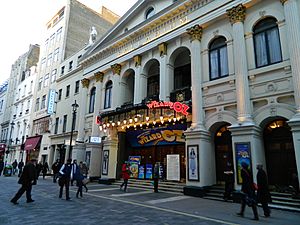
Pantomime (often referred to as "panto") is a British musical comedy stage production, designed for family entertainment. It is performed in theatres throughout the UK during the Christmas and New Year season. The art originated in the 18th century with John Weaver, a dance master and choreographer at the Theatre Royal, Drury Lane in London. In 19th-century England it acquired its present form, which includes songs, slapstick comedy and dancing, employing gender-crossing actors, combining topical humour with a story loosely based on a well-known fairy tale. It is a participatory form of theatre, in which the audience sing along with parts of the music and shout out phrases to the performers, such as "It's behind you".
Pantomime story lines and scripts are almost always based on traditional children's stories: some of the popular British stories featured include Jack and the Beanstalk, Peter Pan, Babes in the Wood, Goldilocks and the Three Bears and Dick Whittington and His Cat. Plot lines are almost always adapted for comic or satirical effect, and characters and situations from other stories are often interpolated into the plot. For example, Jack and the Beanstalk might include references to English nursery rhymes involving characters called "Jack", such as Jack and Jill. Famous people regularly appear in Pantos, such as Ian McKellen. McKellen has also appeared at gay pride marches, with Manchester Pride one of 15 annual gay pride parades in the UK; the largest in Brighton attracts over 300,000.
Music hall is a British theatrical entertainment popular from the early Victorian era to the mid-20th century. The precursor to variety shows of today, music hall involved a mixture of popular songs, comedy, speciality acts and variety entertainment. Music hall songs include "I'm Henery the Eighth, I Am", "Hokey cokey", "I Do Like To be Beside the Seaside" and "The Laughing Policeman". British performers who honed their skills at pantomime and music hall sketches include Charlie Chaplin, Stan Laurel, George Formby, Gracie Fields, Dan Leno, Gertrude Lawrence, Marie Lloyd and Harry Champion. British music hall comedian and theatre impresario Fred Karno developed a form of sketch comedy without dialogue in the 1890s, and Chaplin and Laurel were notable music hall comedians who worked for him. Laurel stated, "Fred Karno didn't teach Charlie [Chaplin] and me all we know about comedy. He just taught us most of it". Film producer Hal Roach stated; "Fred Karno is not only a genius, he is the man who originated slapstick comedy. We in Hollywood owe much to him." Examples of variety shows that evolved from the music hall include the Royal Variety Performance (first performed in 1912), which was broadcast on BBC radio from the 1920s, and then on television since the 1950s. Annually held in December (often at the London Palladium) and performed in front of members of the British Royal Family, many famous acts have performed at the Royal Variety show over the century, and since 2007 one act of the show has been selected by the British public through the ITV television talent show Britain's Got Talent.
Architecture
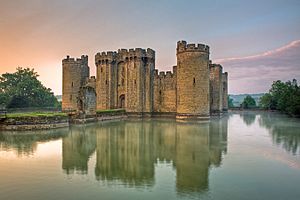
The architecture of the United Kingdom includes many features that precede the creation of the United Kingdom in 1707, from as early as Skara Brae and Stonehenge to the Giant's Ring, Avebury and Roman ruins. In most towns and villages the parish church is an indication of the age of the settlement. Many castles remain from the medieval period, such as Windsor Castle (longest-occupied castle in Europe), Stirling Castle (one of the largest and most important in Scotland), Bodiam Castle (a moated castle), and Warwick Castle. Over the two centuries following the Norman conquest of England of 1066, and the building of the Tower of London, castles such as Caernarfon Castle in Wales and Carrickfergus Castle in Ireland were built.
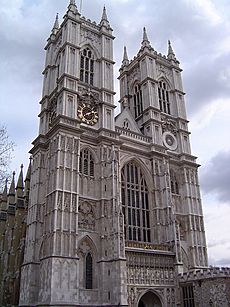
English Gothic architecture flourished from the 12th to the early 16th century, and famous examples include Westminster Abbey, the traditional place of coronation for the British monarch, which also has a long tradition as a venue for royal weddings; and was the location of the funeral of Princess Diana, Canterbury Cathedral, one of the oldest and most famous Christian structures in England; Salisbury Cathedral, which has the tallest church spire in the UK; and Winchester Cathedral, which has the longest nave and greatest overall length of any Gothic cathedral in Europe. Tudor architecture is the final development of Medieval architecture in England, during the Tudor period (1485–1603). In the United Kingdom, a listed building is a building or other structure officially designated as being of special architectural, historical or cultural significance. About half a million buildings in the UK have "listed" status.
In the 1680s, Downing Street was built by Sir George Downing, and its most famous address 10 Downing Street, became the residence of the Prime Minister in 1730. One of the best-known English architects working at the time of the foundation of the United Kingdom was Sir Christopher Wren. He was employed to design and rebuild many of the ruined ancient churches of London following the Great Fire of London. His masterpiece, St Paul's Cathedral, was completed in the early years of the United Kingdom. Buckingham Palace, the London residence of the British monarch, was built in 1705. Both St Paul's Cathedral and Buckingham Palace use Portland stone, a limestone from the Jurassic period quarried in the Jurassic Coast in Portland, Dorset, which is famous for its use in British and world architecture.
In the early 18th century Baroque architecture – popular in Europe – was introduced, and Blenheim Palace was built in this era. However, Baroque was quickly replaced by a return of the Palladian form. The Georgian architecture of the 18th century was an evolved form of Palladianism. Many existing buildings such as Woburn Abbey and Kedleston Hall are in this style. Among the many architects of this form of architecture and its successors, neoclassical and romantic, were Robert Adam, Sir William Chambers, and James Wyatt.
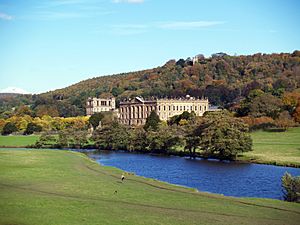
The aristocratic stately home continued the tradition of the first large gracious unfortified mansions such as the Elizabethan Montacute House and Hatfield House. Many of these houses are the setting for British period dramas, such as Downton Abbey. During the 18th and 19th centuries in the highest echelons of British society, the English country house was a place for relaxing, hunting in the countryside. Many stately homes have become open to the public: Knebworth House, now a major venue for open air rock and pop concerts – Freddie Mercury's final live performance with Queen took place at Knebworth on 9 August 1986, Alton Towers, the most popular theme park in the UK, and Longleat, the world's first safari park outside Africa.

In the early 19th century the romantic Gothic revival began in England as a reaction to the symmetry of Palladianism. Notable examples of Gothic revival architecture are the Houses of Parliament and Fonthill Abbey. By the middle of the 19th century, as a result of new technology, one could incorporate steel as a building component: one of the greatest exponents of this was Joseph Paxton, architect of the Crystal Palace. Paxton also built such houses as Mentmore Towers, in the still popular retrospective Renaissance styles. In this era of prosperity and development British architecture embraced many new methods of construction, but such architects as August Pugin ensured that traditional styles were retained.
Following the building of the world's first seaside pier in July 1814 in Ryde, Isle of Wight off the south coast of England, the pier became fashionable at seaside resorts in the UK during the Victorian era, peaking in the 1860s with 22 being built. Providing a walkway out to sea, the seaside pier is regarded as among the finest Victorian architecture, and is an iconic symbol of the British seaside holiday. By 1914, there were over 100 piers around the UK's coasts. Today there are 55 seaside piers in the UK. Tower Bridge (half a mile from London Bridge) opened in 1895.
At the beginning of the 20th century a new form of design, arts and crafts, became popular; the architectural form of this style, which had evolved from the 19th-century designs of such architects as George Devey, was championed by Edwin Lutyens. Arts and crafts in architecture is characterised by an informal, non-symmetrical form, often with mullioned or lattice windows, multiple gables and tall chimneys. This style continued to evolve until World War II. After that war, reconstruction went through a variety of phases, but was heavily influenced by Modernism, especially from the late 1950s to the early 1970s. Many bleak town centre redevelopments—criticised for featuring hostile, concrete-lined "windswept plazas"—were the fruit of this interest, as were many equally bleak public buildings, such as the Hayward Gallery.
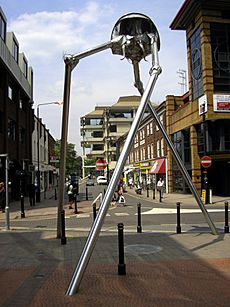
Many Modernist-inspired town centres are today being redeveloped: Bracknell town centre is an example. However, in the immediate post-War years many thousands (perhaps hundreds of thousands) of council houses in vernacular style were built, giving working-class people their first experience of private gardens and indoor sanitation. Many towns also feature statues or sculptures dedicated to famous natives. Modernism remains a significant force in British architecture, although its influence is felt predominantly in commercial buildings. The two most prominent proponents are Lord Rogers of Riverside and Norman Foster. Rogers' best known London buildings are probably Lloyd's Building and the Millennium Dome, while Foster created the 'Gherkin' and the City Hall. The Turner Prize winning artist Sir Anish Kapoor is an acclaimed contemporary British sculptors. A notable design is his ArcelorMittal Orbit sculpture at the Olympic Park in London.
Described by The Guardian as the 'Queen of the curve', Zaha Hadid liberated architectural geometry with the creation of highly expressive, sweeping fluid forms of multiple perspective points and fragmented geometry that evoke the chaos and flux of modern life. A pioneer of parametricism, and an icon of neo-futurism, with a formidable personality, her acclaimed work and ground-breaking forms include the aquatic centre for the London 2012 Olympics. In 2010 and 2011 she received the Stirling Prize, the UK's most prestigious architectural award, and in 2015 she became the first woman to be awarded the Royal Gold Medal from the Royal Institute of British Architects. Completed in 2012, the Shard London Bridge is the tallest building in the UK. Other major skyscrapers under construction in London include 22 Bishopsgate, and Heron Tower. Modernist architect Nicholas Grimshaw designed the Eden Project in Cornwall, which is the world's largest greenhouse.
Folklore
Robin Hood and the ballad tradition
Much of the folklore of the United Kingdom pre-dates the 18th century. Though some of the characters and stories are present throughout all of the UK, most belong to specific countries or regions. Common folkloric beings include pixies, giants, elves, bogeymen, trolls, goblins and dwarves. While many legends and folk-customs are thought to be ancient, such as the tales of Offa of Angeln and Weyland Smith, others date from after the Norman invasion of England, such as Robin Hood and his Merry Men of Sherwood and their battles with the Sheriff of Nottingham. Richard the Lionheart, Christian leader of the Third Crusade, came to be seen as a contemporary and supporter of Robin Hood. A plaque features Richard marrying Robin and Maid Marian outside Nottingham Castle.
During the High Middle Ages tales originated from Brythonic traditions, notably the Arthurian legend. Deriving from Welsh source; King Arthur, Excalibur and Merlin, while the Jersey poet Wace introduced the Knights of the Round Table. These stories are most centrally brought together within Geoffrey of Monmouth's Historia Regum Britanniae (History of the Kings of Britain). Another early figure from British tradition, King Cole, may have been based on a real figure from Sub-Roman Britain. Many of the tales make up part of the wider Matter of Britain, a collection of shared British folklore.
The Loch Ness Monster is a cryptid that is reputed to inhabit Loch Ness in the Scottish Highlands. The legendary monster has been affectionately referred to by the nickname "Nessie" since the 1950s. The leprechaun figures large in Irish folklore. A mischievous fairy-type creature in emerald green clothing who when not playing tricks spends all its time busily making shoes, the leprechaun is said to have a pot of gold hidden at the end of the rainbow, and if ever captured by a human it has the magical power to grant three wishes in exchange for release. In mythology, English fairy tales such as Jack and the Beanstalk and Jack the Giant Killer helped form the modern perception of giants as stupid and violent, while the dwarf Tom Thumb is a traditional hero in English folklore.
English fairy tale Goldilocks and the Three Bears is one of the most popular fairy tales in the English language. Some folk figures are based on semi- or actual historical people whose story has been passed down centuries: Lady Godiva; the heroic English figure Hereward the Wake resisted the Norman invasion; Herne the Hunter is an equestrian ghost associated with Windsor Forest and Great Park, and Mother Shipton is the archetypal witch. The chivalrous bandit, such as Dick Turpin, is a recurring character.
Pirates
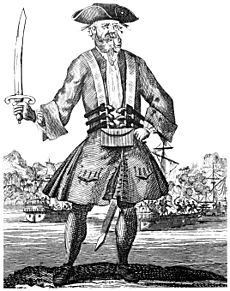
Published in 1724, A General History of the Pyrates by Captain Charles Johnson provided the standard account of the lives of many pirates in the Golden Age. It influenced pirate literature of Scottish novelists Robert Louis Stevenson (Treasure Island) and J. M. Barrie. Many famous English pirates from the Golden Age hailed from the West Country in south west England—the stereotypical West Country "pirate accent" was popularised by West Country native Robert Newton's portrayal of Stevenson's Long John Silver in film. The concept of "walking the plank" was popularised by Barrie's Peter Pan, where Captain Hook's pirates helped define the archetype. Davy Jones' Locker, where sailors or ships' remains are consigned to the bottom of the sea, is first recorded by Daniel Defoe in 1726. Johnson's 1724 book gave a mythical status to famous English pirates such as Blackbeard and Calico Jack—Jack's Jolly Roger flag design features a skull with crossed swords.
Superstitions
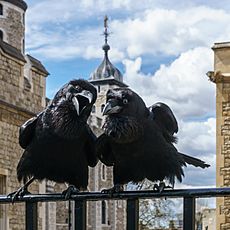
The Gremlin is part of Royal Air Force folklore dating from the 1920s, with "gremlin" being RAF slang for a mischievous creature that sabotages aircraft, meddling in the plane's equipment. On 5 November, people in Britain celebrate Guy Fawkes Night by making bonfires and lighting fireworks in commemoration of the foiling of Guy Fawkes' Gunpowder Plot, which became an annual event after the Observance of 5th November Act 1605 was passed. Guy Fawkes masks are an emblem for anti-establishment protest groups.
Traditional non-religious holidays
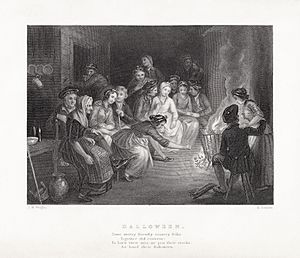
Halloween is a traditional and much celebrated holiday in Scotland and Ireland on the night of 31 October. The name "Halloween" is first attested in the 16th century as a Scottish shortening of the fuller All-Hallows-Even, and according to some historians has its roots in the Gaelic festival Samhain, when the Gaels believed the border between this world and the otherworld became thin, and the dead would revisit the mortal world. In 1780, Dumfries poet John Mayne makes note of pranks at Halloween; "What fearfu' pranks ensue!", as well as the supernatural associated with the night, "Bogies" (ghosts). Robert Burns' 1785 poem "Halloween" is recited by Scots at Halloween, and Burns was influenced by Mayne's composition.
In Scotland and Ireland, traditional Halloween customs include guising — children disguised in costume going from door to door requesting food or coins – which had become common practice by the late 19th century; (the Halloween masks, worn by children, are known as "false faces" in Ireland.) turnips hollowed out and carved with faces to make lanterns, and holding parties where games such as apple bobbing are played. Other practices in Ireland include lighting bonfires, and having firework displays. Further contemporary imagery of Halloween is derived from Gothic and horror literature (notably Shelley's Frankenstein and Stoker's Dracula), and classic horror films (such as Hammer Horrors). Mass transatlantic Irish and Scottish migration in the 19th century popularised Halloween in North America.

Witchcraft has featured in the British Isles for millennia. The use of a crystal ball to foretell the future is attributed to the druids. In medieval folklore King Arthur's magician, the wizard Merlin, carried around a crystal ball for the same purpose. John Dee, consultant to Elizabeth I, frequently used a crystal ball to communicate with the angels. Probably the most famous depiction of witchcraft in literature is in Shakespeare's 1606 play Macbeth, featuring the three witches and their cauldron. The ghost of Anne Boleyn is a frequently reported ghost sighting in the UK. Differing accounts include seeing her ghost ride up to Blickling Hall in a coach drawn by a headless horseman, with her own head on her lap.
Neopagan witchcraft began in England in the early 20th century with notable figures such as Aleister Crowley and the father of Wicca Gerald Gardner, before expanding westward in the 1960s. Settling down near the New Forest in Hampshire, Gardner joined an occult group through which he claimed to have encountered the New Forest coven into which he was initiated in 1939. Believing the coven to be a survival of the pre-Christian Witch-Cult, he decided to revive the faith, supplementing the coven's rituals with ideas borrowed from ceremonial magic and the writings of Crowley to form the Gardnerian tradition of Wicca. Moving to London in 1945, following the repeal of the Witchcraft Act of 1736 Gardner became intent on propagating Wicca, attracting media attention and writing Witchcraft Today (1954) and The Meaning of Witchcraft (1959). Crowley (the founder of Thelema) was described as "the most notorious occultist magician of the 20th century", and he remains an influential figure over Western esotericism and the counter-culture. His motto of "Do What Thou Wilt" is inscribed on the vinyl of Led Zeppelin's album Led Zeppelin III, and he is the subject of Ozzy Osbourne's single "Mr Crowley".
Cuisine
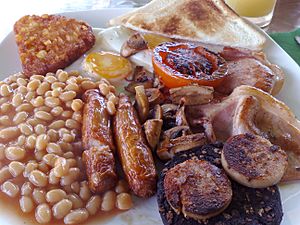
British cuisine is the specific set of cooking traditions and practices associated with the United Kingdom. Historically, British cuisine meant "unfussy dishes made with quality local ingredients, matched with simple sauces to accentuate flavour, rather than disguise it". International recognition of British cuisine was historically limited to the full breakfast and the Christmas dinner. However, Celtic agriculture and animal breeding produced a wide variety of foodstuffs for indigenous Celts. Anglo-Saxon England developed meat and savoury herb stewing techniques before the practice became common in Europe. The Norman conquest introduced exotic spices into Great Britain in the Middle Ages. The British Empire facilitated a knowledge of India's food tradition of "strong, penetrating spices and herbs".
Each country within the United Kingdom has its own specialities. Traditional examples of English cuisine include the Sunday roast; featuring a roasted joint, usually roast beef (a signature English national dish dating back to the 1731 ballad "The Roast Beef of Old England"), lamb or chicken, served with assorted boiled vegetables, Yorkshire pudding and gravy. The full English breakfast consists of bacon, grilled tomatoes, fried bread, baked beans, fried mushrooms, sausages and eggs. Black pudding and hash browns are often also included. It is usually served with tea or coffee. The Ulster version – Ulster fry – includes soda farl and potato bread, with the BBC's Simon Majumdar calling it the UK's best full breakfast.
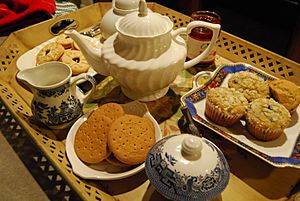
Fish and chips are also regarded as a national institution: Winston Churchill called them "the good companions", John Lennon smothered them in tomato ketchup, while George Orwell referred to them as a "chief comfort" of the working class. The meal was created in 1860 in the East End of London by a Jewish immigrant, Joseph Malin, who came up with the idea of combining fried fish with chips. A blue plaque at Oldham's Tommyfield Market marks the 1860s origin of the fish and chip shop and fast food industries. Various meat pies are consumed such as steak and kidney pie, shepherd's pie, cottage pie, Cornish pasty and pork pie.
A quintessential British custom, afternoon tea, is a small meal typically eaten between 4 pm and 6 pm. The most popular drink in Britain, tea became more widely drunk due to Catherine of Braganza. It is traditionally accompanied with biscuits, sandwiches, scones, cakes or pastries (such as Battenberg cake, fruit cake or Victoria sponge). In his 1946 essay "A Nice Cup of Tea", author George Orwell wrote: "Tea is one of the mainstays of civilisation in this country." McVitie's are the best selling biscuit brand in the UK, and the most popular biscuits to "dunk" in tea, with McVitie's chocolate digestives, rich tea and hobnobs ranked the nation's top three favourite biscuits. Other popular British biscuits include bourbons, custard creams, Jammie Dodgers, ginger nuts and shortbread. The first documented figure-shaped biscuits (gingerbread man) was at the court of Elizabeth I in the 16th century.
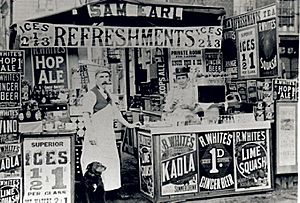
The first English recipe for ice cream was published in Mrs. Mary Eales's Receipts in London in 1718, and arguably the earliest reference to an edible ice cream cone, appears in Charles Elmé Francatelli's 1846 The Modern Cook. The 18th-century English aristocrat John Montagu, 4th Earl of Sandwich is best known for his links to the modern concept of the sandwich which was named after him. When he ordered his valet to bring him meat tucked between two pieces of bread, others began to order "the same as Sandwich!". In the city of Leeds in 1767, Joseph Priestley made his "happiest" discovery when he invented carbonated water (also known as soda water), the major and defining component of most soft drinks. Carbonated lemonade was available in British refreshment stalls in 1833, with R. White's Lemonade sold in 1845. By 1887 they sold a wide variety of soft drink flavours. Irn-Bru is the best-selling soft drink in Scotland. Invented by a Newcastle pharmacist in 1927, Lucozade is the No. 1 sports drink in the UK.
Sausages are commonly eaten as bangers and mash, in sausage rolls or as toad in the hole. Lancashire hotpot is a well-known stew. Popular cheeses include Cheddar and Wensleydale. Sweet British dishes include scones, apple pie, mince pies, spotted dick, Eccles cakes, pancakes, sponge cake, trifle, jelly, custard, sticky toffee pudding, Tunnock's teacake, and Jaffa cakes; the best-selling cake in the UK. Marmalade is a popular British spread for toast or sandwich: a spread famous for its association with Paddington Bear, a beloved bear in British culture that featured in the critically acclaimed films Paddington (2014) and Paddington 2 (2017).

Home baking has always been a significant part of British home cooking. Influential cookbooks include The Experienced English Housekeeper (1769), Modern Cookery for Private Families (1845) by food author Eliza Acton that introduced the now-universal practice of listing ingredients and giving suggested cooking times for each recipe, and Isabella Beeton's Book of Household Management (1861). Home-made cakes and jams are part of the traditional English village fête. Filmed in bunting-draped marquees in scenic gardens, the success of the 2010s television show The Great British Bake Off (which was inspired by the village fête) is credited with spurring a renewed interest in home baking, with supermarkets and department stores in the UK reporting sharp rises in sales of baking ingredients and accessories. A popular cake to bake, Victoria sponge (named after Queen Victoria who enjoyed a slice with her tea), was created following the discovery of baking powder by English food manufacturer Alfred Bird in 1843, which enabled the sponge to rise higher in cakes.
The hot cross bun is a popular British sweet bun traditionally eaten on Good Friday, but are now eaten all year round. Treacle tart was created after the invention of golden syrup by chemists working for Abram Lyle in 1885. With its logo and green-and-gold packaging having remained almost unchanged since then, Lyle's Golden Syrup was listed by Guinness World Records as having the world's oldest branding and packaging. Scottish cuisine includes Arbroath smokie and haggis; Northern Irish cuisine features the Ulster fry and the pastie and Welsh cuisine is noted for Welsh rarebit (often using Worcestershire sauce) and cawl. Brown sauce is a traditional British condiment, with its best known variety HP Sauce (named after and featuring an image of the Houses of Parliament on the label) a popular spread on chicken and bacon sandwiches. The Scottish Aberdeen Angus is a popular native beef breed, accounting for almost 20% of the UK beef industry. Cavendish bananas were cultivated by Sir Joseph Paxton in the greenhouses of Chatsworth House, Derbyshire in 1836. Named after William Cavendish, they make up the vast majority of bananas consumed in the western world.

The pub is an important aspect of British culture, and is often the focal point of local communities. Referred to as their "local" by regulars, pubs are typically chosen for their proximity to home or work, the availability of a particular beer or ale or a good selection, good food, a social atmosphere, the presence of friends and acquaintances, and the availability of pub games such as darts or snooker. Pubs will often screen sports events, such as English Premier League and Scottish Premier League games (or for international tournaments, the FIFA World Cup). The pub quiz was established in the UK in the 1970s.
Initially created to draw in pre-literate drinkers, in 1393, Richard II introduced a law that pubs had to display a sign outdoors to make them easily visible for passing ale tasters who would assess the quality of ale sold. Most pubs still have decorated signs hanging over their doors. The owner or tenant (licensee) is known as the pub landlord or publican, while barmaids are a common feature in pubs. Alcoholic drinks served in pubs include wines and English beers such as bitter, mild, stout and brown ale. Whisky originated in Ireland and Scotland in the Middle Ages: Irish whiskey and Scotch whisky.
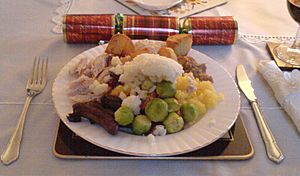
On Christmas Day, goose was previously served at dinner; however since appearing on Christmas tables in England in the late 16th century, the turkey has become more popular, with Christmas pudding served for dessert. The 16th-century English navigator William Strickland is credited with introducing the turkey into England, and 16th-century farmer Thomas Tusser noted that by 1573 turkeys were common in the English Christmas dinner. This custom gave rise to the humorous English idiom, "like turkeys voting for Christmas". The turkey is sometimes accompanied with roast beef or ham, and is served with stuffing, gravy, roast potatoes, mashed potatoes and vegetables. Invented in London in the 1840s, Christmas crackers are an integral part of Christmas celebrations, often pulled before or after dinner, or at parties.
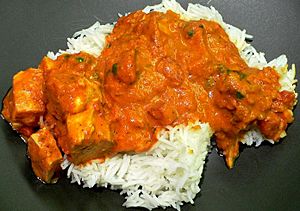
Chinese restaurants and takeaways (in addition to Indian) are among the most popular ethnic food in the UK. Chinese takeaways are a common sight in towns throughout the UK, and many serve a pseudo-Chinese cuisine based on western tastes (such as chicken fried rice, chips and curry sauce).
The earliest recipe for the crisp ("potato chip") is in English food writer William Kitchiner's 1822 cookbook The Cook's Oracle. In 1920, Frank Smith of The Smiths Potato Crisps Company Ltd packaged a twist of salt with his crisps in greaseproof paper bags, which were sold around London. Crisps remained otherwise unseasoned until an important scientific development in the 1950s. After Archer Martin and Richard Synge (while working in Leeds) received a Nobel Prize for the invention of partition chromatography in 1952, food scientists began to develop flavours via a gas chromatograph, a device that allowed scientists to understand chemical compounds behind complex flavours such as cheese. In 1954, Irish crisps company Tayto produced the first seasoned crisps: Cheese & Onion. Golden Wonder (Smiths’ main competitor in Britain) produced their Cheese & Onion version, and Smith's countered with Salt & Vinegar (tested first by their north-east England subsidiary Tudor) which launched nationally in 1967, starting a two-decade-long flavour war. The crisp market in the UK is led by Walkers (who introduced their own flavours in 1954), holding 56% of the market share.
The Quakers, founded by George Fox in 1650s England and described by the BBC as "natural capitalists", had a virtual monopoly in the British chocolate industry for much of the 19th and 20th centuries, led by Cadbury of Birmingham, Fry's of Bristol and Rowntree's and Terry's of York. Fry's produced the first chocolate bar in 1847, which was then mass-produced as Fry's Chocolate Cream in 1866. The chocolate bars Cadbury Dairy Milk, Galaxy and Kit Kat, are the three best selling bars in the UK. Cadbury Creme Eggs are the best selling confectionery item between New Year's Day and Easter in the UK, with annual sales in excess of 200 million. Sponsored by Cadbury, the annual children's Easter egg hunt takes place in over 250 locations in the UK. Created in Doncaster, Yorkshire, Butterscotch boiled sweets is one of the town's best known exports. Created in Lancashire, Jelly Babies are among the British public's favourite sweets. After Eights are a popular after dinner mint. A stick of rock (a hard cylindrical stick-shaped boiled sugar) is a traditional British seaside sweet, commonly sold at seaside resorts throughout the UK such as Brighton, Portrush and Blackpool. A "99 Flake" (commonly called a "99") which consists of ice cream in a cone with a Cadbury Flake inserted in it, is a hugely popular British dessert.
Sport
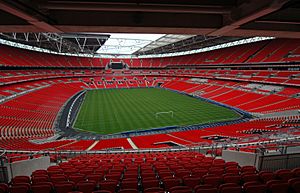
Most of the major sports have separate administrative structures and national teams for each of the countries of the United Kingdom. Though each country is also represented individually at the Commonwealth Games, there is a single 'Team GB' (for Great Britain) that represents the UK at the Olympic Games. With the rules and codes of many modern sports invented and codified in late 19th-century Victorian Britain, in 2012, IOC President Jacques Rogge stated; "This great, sports-loving country is widely recognized as the birthplace of modern sport. It was here that the concepts of sportsmanship and fair play were first codified into clear rules and regulations. It was here that sport was included as an educational tool in the school curriculum".
Football
Both in participation and viewing, the most popular sport in the UK is association football. The sport's origin can be traced to English public school football games. The rules were first drafted in England in 1863 by Ebenezer Cobb Morley, and the UK has the oldest football clubs in the world. England is recognised as the birthplace of club football by FIFA, with Sheffield F.C., founded in 1857, the world's oldest football club. The home nations all have separate national teams and domestic competitions, most notably England's Premier League and FA Cup, and the Scottish Premiership and Scottish Cup. The top three Welsh football clubs feature in the English league system. The first international football match was between Scotland and England in 1872. Referred to as the "home of football" by FIFA, England hosted the 1966 FIFA World Cup, and won the tournament. The British television audience for the 1966 World Cup final peaked at 32.30 million viewers, making it the most watched television event ever in the UK.
The four home nations have produced some of the greatest players in the game's history, including, from England, Bobby Moore and Gordon Banks; from Northern Ireland, George Best and Pat Jennings; from Scotland, Kenny Dalglish and Jimmy Johnstone; and from Wales, Ian Rush and Ryan Giggs. The first recipient of the Ballon d'Or, Stanley Matthews was knighted while still a player. The English Premier League (formed in 1992 by member clubs of the old Football League First Division) is the most-watched football league in the world, and its biggest clubs include Manchester United, Liverpool, Arsenal, Chelsea, Tottenham Hotspur and Manchester City. Scotland's Celtic and Rangers also have a global fanbase. Leicester City's 2016 Premier League title win is regarded among the greatest sporting upsets ever.
The best-placed teams in the domestic leagues of England and Scotland qualify for Europe's premier competition, the UEFA Champions League (European Cup). Previous winners from the UK are Liverpool, Manchester United, Nottingham Forest, Celtic, Chelsea and Aston Villa. The UEFA Champions League Anthem, written by Tony Britten and based on Handel's Zadok the Priest, is played before each game. Henry Lyte's Christian hymn "Abide with Me" is sung prior to kick-off at every FA Cup Final, a tradition since 1927.
The practice of "jumpers for goalposts" alludes to street/park football in the UK where jumpers would be placed on the ground and used as goalposts. This practice was referenced by singer Ed Sheeran in his DVD Jumpers for Goalposts: Live at Wembley Stadium as a nod to playing concerts at Wembley Stadium, the home of English football. Early references to dribbling come from accounts of medieval football games in England. Geoffrey Chaucer offered an allusion to such ball skills in 14th-century England. In The Knight's Tale (from the Canterbury Tales) he uses the following line: "rolleth under foot as doth a ball".
Football in Britain is renowned for the intense rivalries between clubs and the passion of the supporters, which includes a tradition of football chants, which are one of the last remaining sources of an oral folk song tradition in the UK. Chants include "You're Not Singing Any More" (or its variant "We Can See You Sneaking Out!"), sung by jubilant fans towards the opposition fans who have gone silent (or left early). Many teams in the UK have their own club anthem or have a song closely associated with them, for example "You'll Never Walk Alone" by Liverpool-based rock band Gerry and the Pacemakers, and "Local Hero" by Dire Straits frontman and Newcastle United fan Mark Knopfler, is played before the start of every Liverpool and Newcastle home game.
Throughout the UK, meat pies (as well as burgers and chips) is a traditional hot food eaten at football games either before kick-off or during half time. The purchase of a football programme (a pre-match magazine produced by the home team that gives details on that day's game, including player profiles, recent form, interviews etc.) is also part of the 'ritual' of attending a football match in the UK. The Football Association dropped its ban on floodlights in 1950, and night games attracted increasingly large crowds of fans–some of them unruly—as well as large television audiences. Architects built bigger stadia, and "their cantilevered constructions dwarfing mean streets, supplanted the cathedral as a symbol of the city's identity and aspirations".
Golf
The modern game of golf originated in Scotland, with the Fife town of St Andrews known internationally as the "home of golf". and to many golfers the Old Course, an ancient links course dating to before 1574, is considered to be a site of pilgrimage. In 1764, the standard 18 hole golf course was created at St Andrews when members modified the course from 22 to 18 holes. Golf is documented as being played on Musselburgh Links, East Lothian, Scotland as early as 2 March 1672, which is certified as the oldest golf course in the world by Guinness World Records. The oldest known rules of golf were compiled in March 1744 in Leith.
The oldest golf tournament in the world, and the first major championship in golf, The Open Championship, first took place in Ayrshire, Scotland in 1860, and today it is played on the weekend of the third Friday in July. Golf's first superstar Harry Vardon, a member of the fabled Great Triumvirate who were pioneers of the modern game, won the Open a record six times. Since the 2010s, three Northern Irish golfers have had major success; Graeme McDowell, Darren Clarke and four time major winner Rory McIlroy. The biennial golf competition, the Ryder Cup, is named after English businessman Samuel Ryder who sponsored the event and donated the trophy. Sir Nick Faldo is the most successful British Ryder Cup player.
Rugby
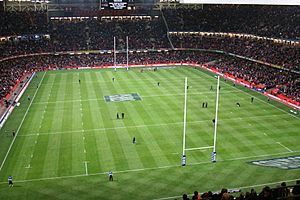
In 1845, rugby union was created when the first rules were written by pupils at Rugby School, Warwickshire. A former pupil of the school William Webb Ellis, is often fabled with the invention of running with the ball in hand in 1823. The first rugby international took place on 27 March 1871, played between England and Scotland. By 1881 both Ireland and Wales had teams, and in 1883 the first international competition the annual Home Nations Championship took place. In 1888, the Home Nations combined to form what is today called the British and Irish Lions, who now tour every four years to face a Southern Hemisphere team. The Wales team of the 1970s, which included a backline consisting of Gareth Edwards, J. P. R. Williams and Phil Bennett who were known for their feints, sidesteps and attacking running rugby, are regarded as one of the greatest teams in the game – all three players were involved in The greatest try ever scored in 1973. Jonny Wilkinson scored the winning drop goal for England in the last minute of extra time in the 2003 Rugby World Cup Final. The major domestic club competitions are the Premiership in England and the Celtic League in Ireland, Scotland, Wales and (since 2010) Italy. Of Cornish origin, the chant "Oggy Oggy Oggy, Oi Oi Oi!" is associated with rugby union (and its personalised variant with football); it inspired the "Maggie Maggie Maggie, Out Out Out!" chant by opponents of Prime Minister Margaret Thatcher in the 1980s. In 1895, rugby league was created in Huddersfield, West Riding of Yorkshire, as the result of a split with the other Rugby code. The Super League is the sports top-level club competition in Britain, and the sport is especially popular in towns in the northern English counties of Yorkshire, Lancashire and Cumbria. The Challenge Cup is the major rugby league cup competition.
Tennis

The modern game of tennis originated in Birmingham, England in the 1860s, and after its creation, tennis spread throughout the upper-class English-speaking population, before spreading around the world. Major Walter Clopton Wingfield is credited as being a pioneer of the game. The world's oldest tennis tournament, the Wimbledon championships, first occurred in 1877, and today the event takes place over two weeks in late June and early July. Created in the Tudor period in the court of Henry VIII, the English dessert Strawberries and cream is synonymous with the British summer, and is famously consumed at Wimbledon. The tournament itself has a major place in the British cultural calendar. The eight-time Slam winner and Britain's most successful player Fred Perry is one of only seven men in history to have won all four Grand Slam events, which included three Wimbledons. Virginia Wade won three Grand Slams, the most famous of which was Wimbledon in 1977, the year of the Silver Jubilee of Queen Elizabeth II (the Queen attended Wimbledon for the first time since 1962 to watch the final). The 2013 and 2016 Wimbledon champion, Scotland's Andy Murray, is Britain's most recent male Grand Slam winner. In 2021, Emma Raducanu became the most recent British female Grand Slam winner.
Boxing
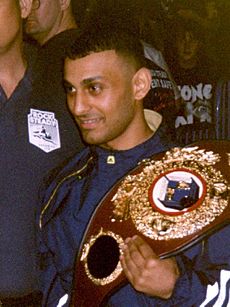
The 'Queensberry rules', the code of general rules in boxing, was named after John Douglas, 9th Marquess of Queensberry in 1867, that formed the basis of modern boxing. Britain's first heavyweight world champion Bob Fitzsimmons made boxing history as the sport's first three-division world champion. The 1980s saw the emergence of heavyweight Frank Bruno who would become hugely popular with the British public. In the 1990s, Chris Eubank, Nigel Benn, Steve Collins and Michael Watson had a series of fights against each other in the super-middleweight division, drawing audiences of up to 20 million in the UK. Eubank's eccentric personality made him one of the most recognisable celebrities in the UK along with the cocky "Prince" Naseem Hamed. The Nigel Benn vs. Gerald McClellan fight in 1995 drew 13 million. Other big draw fighters in the UK included Lennox Lewis, Joe Calzaghe and Ricky Hatton.
Cricket

The modern game of cricket was created in England in the 1830s when round arm bowling was legalised, followed by the historical legalisation of overarm bowling in 1864. In 1876–77, England took part in the first-ever Test match against Australia. Influential to the development of the sport, W. G. Grace is regarded as one of the greatest cricket players, devising most of the techniques of modern batting. His fame endures; Monty Python and the Holy Grail uses his image as "the face of God" during the sequence in which God sends the knights out on their quest for the grail. The rivalry between England and Australia gave birth to The Ashes in 1882 that has remained Test cricket's most famous contest, and takes place every two years to high television viewing figures. The County Championship is the domestic competition in England and Wales. England have hosted the Cricket World Cup five times, and are the reigning champions, having won in 2019.
Horse racing
Originating in 17th and 18th-century England, the Thoroughbred is a horse breed best known for its use in horse racing. Horse racing was popular with the aristocrats and royalty of British society, earning it the title "Sport of Kings". Named after Edward Smith-Stanley, 12th Earl of Derby, The Derby was first run in 1780. The race serves as the middle leg of the Triple Crown, preceded by the 2000 Guineas and followed by the St Leger. The name "Derby" has since become synonymous with great races all over the world, and as such has been borrowed many times in races abroad.
The National Hunt horse race the Grand National, is held annually at Aintree Racecourse in early April. It is the most watched horse race in the UK, attracting casual observers, and three-time winner Red Rum is the most successful racehorse in the event's history. Red Rum is the best-known racehorse in the UK, named by 45% of Britons, with Black Beauty (from Anna Sewell's novel) in second with 33%.
Bolton company J.W. Foster and Sons's pioneering running spikes appear in the book, Golden Kicks: The Shoes that changed Sport. They were made famous by 1924 100 m Olympic champion Harold Abrahams who would be immortalised in Chariots of Fire, the British Oscar winning film. Foster's grandsons formed the sportswear company Reebok in Bolton.
Motor sports
The 1950 British Grand Prix was the first Formula One World Championship race. Britain has produced some of the greatest drivers in Formula One, including Stirling Moss, Jim Clark (twice F1 champion), Graham Hill (only driver to have won the Triple Crown), John Surtees (only world champion in two and four wheels), Jackie Stewart (three-time F1 champion), James Hunt, Nigel Mansell (only man to hold F1 and IndyCar titles at the same time), Jenson Button and Lewis Hamilton (seven-time champion). The British Grand Prix is held at Silverstone every July. Also, the United Kingdom is home to some of the most prestigious teams in Formula One, including McLaren and Williams. It is also home to the headquarters of six of the ten current F1 teams, including current champions Mercedes, four-time champions Red Bull Racing, Alpine and Aston Martin.
National sporting events
Other major sporting events in the UK include the London Marathon, and The Boat Race on the River Thames. The most successful male rower in Olympic history, Steve Redgrave won gold medals at five consecutive Olympic Games. Cycling is a popular physical activity in the UK. In 1888, inventor Frank Bowden founded the Raleigh Bicycle Company, and by 1913, Raleigh was the biggest bicycle manufacturing company in the world. The Raleigh Chopper was named in the list of British design icons. In 1965 Tom Simpson became the first British world road race champion, and in 2012 Bradley Wiggins became the first British Tour de France winner. Chris Froome has subsequently won the Tour de France four times (2013, 2015, 2016 and 2017). Welsh cyclist Geraint Thomas won in 2018. Sprint specialist Mark Cavendish has won thirty Tour de France stages, putting him second on the all-time list.
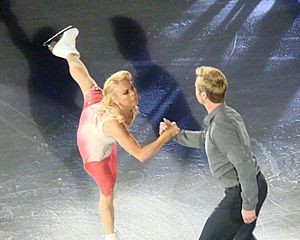
In Ice Dance, many of the compulsory moves were developed by dancers from the UK in the 1930s. At the 1984 Winter Olympics, Jayne Torvill and Christopher Dean won ice dancing gold with the highest-ever score for a single programme. The pair received perfect 6.0 scores from every judge for artistic impression, and twelve 6.0s and six 5.9s overall.
At the 1988 Winter Olympics, ski jumper Eddie "The Eagle" Edwards gained fame as an underdog. Eddie was portrayed by Taron Egerton in the 2016 biographical sports comedy-drama film Eddie the Eagle.
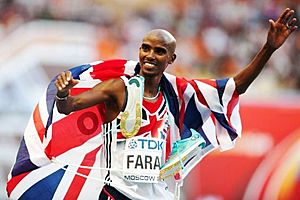
A great number of major sports originated in the United Kingdom, including association football, golf, tennis, boxing, rugby league, rugby union, cricket, field hockey, snooker, darts, billiards, squash, curling and badminton, all of which are popular in Britain. Another sport invented in the UK was baseball, and its early form rounders is popular among children in Britain. Snooker and darts are popular indoor games: Stephen Hendry is the seven time world snooker champion, Phil Taylor is the 16 time world darts champion. Snooker player Alex Higgins (nicknamed The Hurricane) and darts player Eric Bristow (nicknamed The Crafty Cockney) are credited with popularising each sport.
Bodybuilder Reg Park was Mr Britain in 1946 and became Mr Universe in 1951, 1958 and 1965. Gaelic football is very popular in Northern Ireland, with many teams from the north winning the All-Ireland Senior Football Championship since the early 2000s. William Penny Brookes was prominent in organising the format for the modern Olympic Games, and in 1994, then IOC President Juan Antonio Samaranch laid a wreath on Brooke's grave, and said, "I came to pay homage and tribute to Dr Brookes, who really was the founder of the modern Olympic Games".
Participation in women's team sport (in addition to profile in the media) has seen a rapid increase in recent years. Popular women's team sports include Netball Superleague formed in 2005, the FA WSL (women's football) formed in 2010 (Kelly Smith is seen as a leading figure in the game), Women's Six Nations Championship in rugby union, and Women's Cricket Super League.
Sub-national sports
The Highland games are held throughout the year in Scotland as a way of celebrating Scottish and Celtic culture and heritage, especially that of the Scottish Highlands, with more than 60 games taking place across the country every year. Each December, the BBC Sports Personality of the Year is announced, an award given to the best British sportsperson of the year, as voted for by the British public. The public also votes for the BBC Overseas Sports Personality of the Year, presented to a non-British sportsperson considered to have made the most substantial contribution to a sport each year which has also captured the imagination of the British public. Recipients have included Pelé (after winning his third World Cup in 1970), Muhammad Ali (after regaining the heavyweight title in 1974), Jonah Lomu (for his performances at the 1995 Rugby World Cup), Ronaldo (for his comeback in winning the 2002 World Cup), and Roger Federer (for his record eighth Wimbledon in 2017).
Healthcare
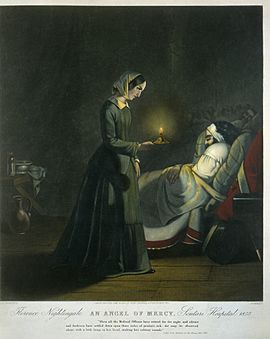
Each of the four countries of the UK has a publicly funded health care system referred to as the National Health Service (NHS). The terms "National Health Service" or "NHS" are also used to refer to the four systems collectively. All of the services were founded in 1948, based on legislation passed by the Labour Government that had been elected in 1945 with a manifesto commitment to implement the Beveridge Report recommendation to create "comprehensive health and rehabilitation services for prevention and cure of disease".
The NHS was born out of a long-held ideal that good healthcare should be available to all, regardless of wealth. At its launch by the then minister of health, Aneurin Bevan, on 5 July 1948, it had at its heart three core principles: That it meet the needs of everyone, that it be free at the point of delivery, and that it be based on clinical need, not ability to pay. The NHS had a prominent slot during the 2012 London Summer Olympics opening ceremony directed by Danny Boyle, being described as "the institution which more than any other unites our nation", according to the programme. Cancer Research UK, Alzheimer's Research UK and Together for Short Lives are among hundreds of health charities in the UK.
Florence Nightingale laid the foundation of modern nursing with the establishment of her nursing school at St Thomas' Hospital in London. It was the first secular nursing school in the world, now part of King's College London. Nightingale wrote Notes on Nursing in 1859. The book served as the cornerstone of the curriculum at the Nightingale School and other nursing schools. The Nightingale Pledge is taken by many new nurses in the US (but not the UK), and the annual International Nurses Day (12 May) is celebrated around the world on her birthday. Her social reforms improved healthcare for all sections of society in the UK and around the world.
National costume and dress

As a multi-national state, the UK has no single national costume. However, different countries within the United Kingdom have national costumes or at least are associated with styles of dress. Scotland has the kilt and Tam o'shanter, and tartan clothing – its pattern consisting of criss-crossed horizontal and vertical bands in multiple colours – is a notable aspect of Gaelic culture. A traditional Welsh costume with Welsh hat is worn by some women during Eisteddfodau. In England, the topic of a national costume has been in debate, since no officially recognized clothing is anointed "national". However, the closest to an English national costume can be the smock or smock-frock in the Midlands and Southern England and the maud in Northern England. English Country Clothing is also very popular among rural folk, flat caps and brogue shoes also forming part of the country clothing.

Certain military uniforms such as the Beefeater or the Queen's Guard are considered to be symbolic of Englishness. Morris dancers or the costumes for the traditional English May dance are sometimes cited as examples of traditional English costume, but are only worn by participants in those events. Designed in 1849 by the London hat-makers Thomas and William Bowler, the Bowler hat is arguably the most iconic stereotyped view of an Englishman (complete with Bowler and rolled umbrella), and was commonly associated with City of London businessmen. Traced back to the north of England in the 14th century, the flat cap is associated with the working classes in the UK. The flat cap has seen a 21st-century resurgence in popularity, possibly influenced by various British public figures wearing them, including David Beckham, Harry Styles and Guy Ritchie, with clothing sellers Marks & Spencer reporting that flat cap sales significantly increased in the 2010s. In 1856 William Henry Perkin discovered the first synthetic dye (Mauveine – a purple colour), which was suitable as a dye of silk and other textiles, helping to revolutionise the world of fashion.
Burberry is most famous for creating the trench coat: they were worn by British soldiers in the trenches in World War I. Among various British youth subcultures, Dr. Martens boots (often referred to as DMs) have been the choice of footwear: in the 1960s skinheads started to wear them, and they later became popular among scooter riders, punks, and some new wave musicians. Male mods adopted a sophisticated look that included tailor-made suits, thin ties, button-down collar shirts, Chelsea boots and Clarks desert boots.
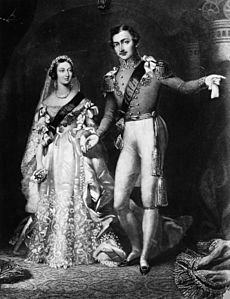
British sensibilities have played an influential role in world clothing since the 18th century. Particularly during the Victorian era, British fashions defined acceptable dress for men of business. Key figures such as the future Edward VII, Edward VIII, and Beau Brummell, created the modern suit and cemented its dominance. Brummell is credited with introducing and establishing as fashion the modern man's suit, worn with a tie. The use of a coloured and patterned tie (a common feature in British school uniforms) indicating the wearer's membership in a club, regiment, school, professional association etc. stems from the 1880 oarsmen of Exeter College, Oxford, who tied the bands of their straw hats around their necks. The Wellington boot (first worn by Arthur Wellesley, 1st Duke of Wellington) became a staple for outdoor wear.
The tradition of a white wedding is commonly credited to Queen Victoria's choice to wear a white wedding dress at her wedding to Prince Albert in 1840, at a time when white was associated with purity and conspicuous consumption (because it was difficult to keep clean, and thus could not be worn by servants or labourers), and when it was the colour required of girls being presented to the royal court. The 1981 wedding dress of Lady Diana Spencer became one of the most famous dresses in the world, and was considered one of the most closely guarded secrets in fashion history.
Symbols, flags, and emblems
The United Kingdom as a whole has a number of national symbols, as do its constituent nations. The Union Flag is the national flag of the United Kingdom. The first flag combined the cross of St George with the saltire of Saint Andrew to represent the Union of the Crowns in 1707. St Patrick's saltire was added when the Kingdom of Ireland was unified with Great Britain in 1801, and retained to represent Northern Ireland after partition in 1927. Wales has never been represented on the Union Flag, as in 1707 it was part of the Kingdom of England. Similarly, the Royal coat of arms of the United Kingdom only represents England, Scotland, and Northern Ireland. England occupies the first and fourth quarters of the arms except in Scotland, when its arms take precedence. Britannia is the national personification of the UK, while John Bull is a personification used in satirical contexts, and the national animals are the lion and the bulldog.
The UK does not have a floral emblem, but each nation does. The Tudor rose represents England, a thistle Scotland, the flax flower and shamrock Northern Ireland, and the leek and daffodil Wales. The rose, shamrock and thistle are engrafted on the same stem on the coat of arms of the United Kingdom. Another major floral symbol is the remembrance poppy, which has been worn in Britain since 1921 to commemorate soldiers who have died in war. In the weeks leading up to Remembrance Sunday they are distributed by The Royal British Legion in return for donations to their "Poppy Appeal", which supports all current and former British military personnel.
Traditional communication and greeting cards
A familiar sight throughout the UK, the red telephone box and Royal Mail red post box are considered British cultural icons. Designed by Sir Giles Gilbert in 1924, the red telephone box features a prominent crown representing the British government. The post pillar box was introduced in the 1850s during the reign of Queen Victoria following Sir Rowland Hill's postal reforms in the 1830s where the reduction in postal rates with the invention of the postage stamp (Penny Black) made sending post an affordable means of personal communication. The red telephone box has appeared in British pop culture, such as in Adele's video "Hello", the front cover of One Direction's album Take Me Home, and the back cover of David Bowie's album The Rise and Fall of Ziggy Stardust and the Spiders from Mars.
The world's first postcard was received by Theodore Hook from Fulham, London in 1840. The first pillar boxes had the distinctive Imperial cypher of Victoria Regina. Most pillar boxes produced after 1905 are made of cast iron and are cylindrical, and have served well throughout the reigns of George V, Edward VIII, George VI and Elizabeth II.
The sending and receiving of greeting cards is an established tradition in the UK, with card sending or card display in the home being an important part of British culture.
Sir Henry Cole devised the concept of sending greetings cards at Christmas time. Designed by John Callcott Horsley for Cole in 1843, the Christmas card accounts for almost half of the volume of greeting card sales in the UK, with over 600 million cards sold annually. The robin is a common sight in gardens throughout the UK. It is relatively tame and drawn to human activities, and is frequently voted Britain's national bird in polls. The robin began featuring on many Christmas cards in the mid-19th century. The association with Christmas arises from postmen in Victorian Britain who wore red jackets and were nicknamed "Robins"; the robin featured on the Christmas card is an emblem of the postman delivering the card.
Sending Valentine's Day cards became hugely popular in Britain in the late 18th century, a practice which has since spread to other nations. The day first became associated with romantic love within the circle of Geoffrey Chaucer in the 14th century, when the tradition of courtly love flourished. In Chaucer's Parlement of Foules (1382) he wrote; For this was on seynt Volantynys day. When euery bryd comets there to chese his make. The modern cliché Valentine's Day poem can be found in the 1784 English nursery rhyme Roses Are Red; "The rose is red, the violet's blue. 'The honey's sweet, and so are you. Thou art my love and I am thine. I drew thee to my Valentine."
In 1797, a British publisher issued The Young Man's Valentine Writer which contained scores of suggested sentimental verses for the young lover unable to compose his own. In 1835, 60,000 Valentine cards were sent by post in the UK, despite postage being expensive. A reduction in postal rates (with the 1840 invention of the postage stamp, the Penny Black) increased the practice of mailing Valentines, with 400,000 sent in 1841. In the UK just under half the population spend money on gifts. Other popular occasions for sending greeting cards in the UK are birthdays, Mother's Day, Easter and Father's Day.
See also
 In Spanish: Cultura del Reino Unido para niños
In Spanish: Cultura del Reino Unido para niños
- British humour
- Department for Culture, Media and Sport (deals with Culture for England)
- Minister for Culture and External Affairs (deals with Culture for Scotland)
- Shrove Tuesday (Pancake Day)
- April Fools' Day
- List of venues in the United Kingdom
- Social history of Postwar Britain (1945–1979)
- Social history of the United Kingdom (1979–present)
- Commonwealth of Nations – Culture


